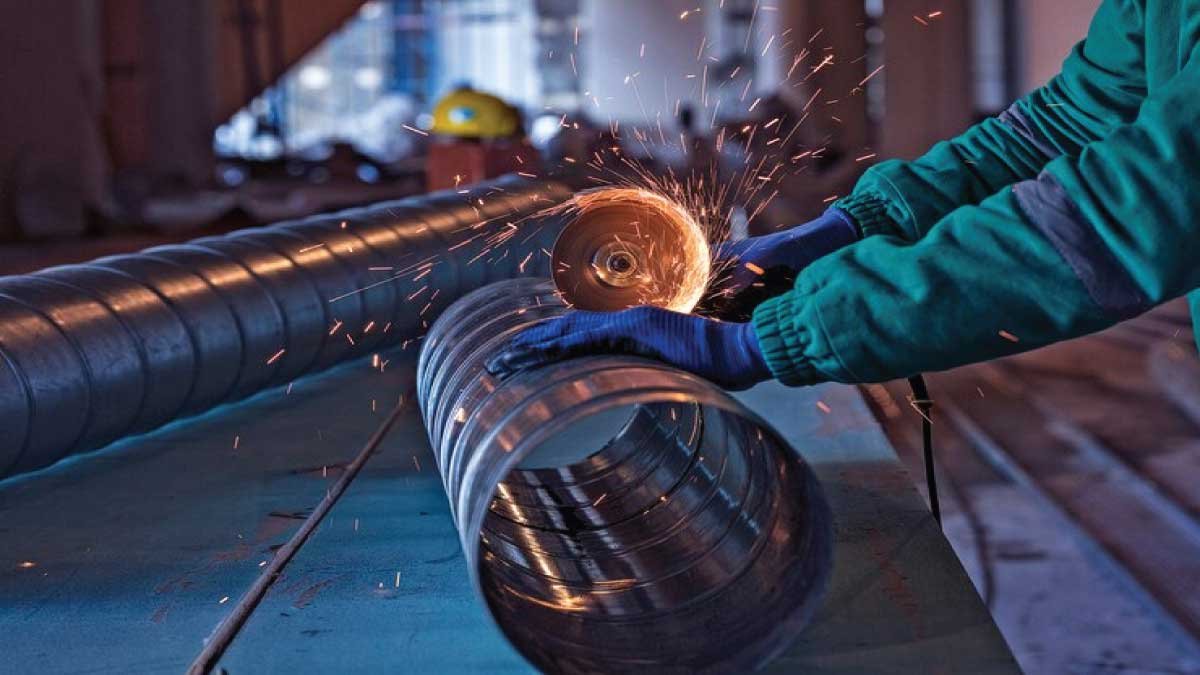Sheet Metal Fabrication: Different Types of Fabrication
Sheet Metal Fabrication is a versatile process that involves forming and shaping metal sheets into a wide array of components or structures. This method is extensively employed across manufacturing industries, particularly in the production of enclosures, panels, casings, and other intricate parts. Sheet metal fabrication encompasses various techniques such as cutting, bending, punching, and welding to achieve the desired shapes and dimensions. Cutting methods include shearing, laser cutting, or plasma cutting, which precisely remove excess material from the metal sheet. Bending operations utilize press brakes or rollers to bend the metal sheet into specific angles or curves.
Punching involves creating holes or perforations in the sheet metal using specialized tools. Welding is often used to join multiple sheet metal pieces together to form larger structures or assemblies. Sheet metal fabrication offers advantages such as high strength, durability, and the ability to create complex shapes, making it an indispensable process in numerous industrial applications.
Plastic Fabrication: Various Types of Fabrication
Wood Fabrication: Key Types of Fabrication
Wood Fabrication involves the art of crafting and shaping wooden materials into a diverse array of products, including furniture, structures, and decorative objects. This process relies on a combination of traditional woodworking techniques and modern methods to achieve desired outcomes. Carpentry, one of the oldest woodworking practices, involves constructing wooden structures using joinery techniques such as mortise and tenon or dovetail joints, often applied in building houses, cabinets, or furniture. Woodturning utilizes a lathe machine to shape wooden objects symmetrically by rotating them against cutting tools, creating items like table legs, bowls, or decorative spindles.
Wood carving involves meticulously sculpting wooden surfaces with chisels, gouges, or knives to add intricate designs or textures, commonly seen in ornamental pieces, sculptures, or architectural details. Wood fabrication requires skill, precision, and creativity to transform raw wood into functional and aesthetically pleasing creations, preserving the timeless beauty and versatility of this natural material.
Composite Fabrication: Understanding Types of Fabrication
Glass Fabrication: Types of Fabrication Explained
Glass Fabrication involves a meticulous process of shaping and forming glass materials into a wide range of products or structures. This intricate craft utilizes various techniques such as glass blowing, cutting, grinding, and fusion to achieve desired shapes, textures, and functionalities. Glass blowing, one of the oldest methods, involves heating glass until it’s malleable and then shaping it by blowing air through a blowpipe or by hand manipulation to create items like bottles, vases, or ornaments. Cutting and grinding techniques use specialized tools such as glass cutters or diamond saws to precisely shape glass into specific dimensions or designs, commonly seen in windows, mirrors, or glassware.
Fusion involves melting and fusing multiple glass pieces together at high temperatures to create decorative or functional objects with intricate patterns or color combinations, often used in art glass or stained glass windows. Glass fabrication requires skill, precision, and creativity to transform molten glass into exquisite works of art or practical everyday objects, showcasing the beauty and versatility of this transparent material.
Metal Casting Fabrication: Types of Fabrication Techniques
3D Printing/Additive Manufacturing: Types of Fabrication Methods
3D Printing, also known as Additive Manufacturing, revolutionizes traditional manufacturing processes by building three-dimensional objects layer by layer from digital models. This innovative method enables the creation of complex geometries and customized designs with unparalleled precision and efficiency. Various additive processes are utilized in 3D printing, including Fused Deposition Modeling (FDM), where thermoplastic filaments are heated and extruded through a nozzle to create layers, Stereolithography (SLA), which uses UV light to solidify liquid resin layer by layer, and Selective Laser Sintering (SLS), where a laser selectively fuses powdered material to form layers.
3D printing offers numerous advantages, such as rapid prototyping, reduced material waste, and the ability to produce intricate parts with intricate internal structures. This technology finds applications across industries, including aerospace, healthcare, automotive, and consumer goods, where it facilitates product development, customization, and on-demand manufacturing. As 3D printing continues to advance, it promises to reshape the manufacturing landscape, offering new possibilities for innovation and production efficiency.
CNC (Computer Numerical Control) Fabrication: Types of Fabrication Processes
These fabrication methods encompass a wide range of techniques and technologies used across industries to manufacture diverse products and structures. Each method offers its own advantages in terms of precision, efficiency, and suitability for different materials and applications.
Conclusion About Types of Fabrication:
FAQs About Types Of Fabrications:
What are the key differences between welding and machining fabrication techniques?
Welding involves joining metal pieces together using heat and/or pressure, while machining fabricates parts by shaping metal through cutting, drilling, milling, or turning processes.
How does composite fabrication differ from traditional metal fabrication methods?
Composite fabrication involves combining different materials like fiberglass, carbon fiber, or resin infused fabrics to create structures with enhanced properties, while traditional metal fabrication focuses on shaping metal components through processes like welding, cutting, and bending.
What are the advantages of 3D printing/additive manufacturing over conventional manufacturing methods?
3D printing offers advantages such as rapid prototyping, customization, and reduced material waste compared to conventional methods, allowing for the creation of complex geometries with high precision and efficiency.
Can CNC fabrication be used for materials other than metal?
Yes, CNC fabrication can be utilized for a variety of materials including wood, plastic, composites, and even certain types of stone. The CNC machine’s computer-controlled precision makes it suitable for a wide range of fabrication tasks across different materials.
How does glass fabrication contribute to both functional and artistic applications?
Glass fabrication techniques like blowing, cutting, and fusion enable the creation of both functional items like windows and bottles, as well as artistic pieces like sculptures and stained glass windows. These processes showcase the versatility of glass as a material in various industries and art forms.

